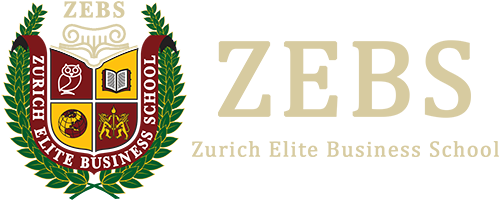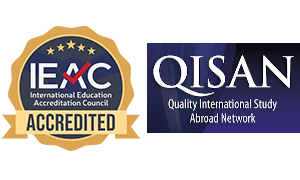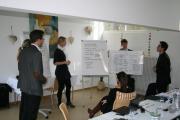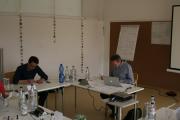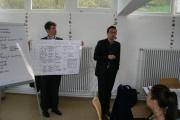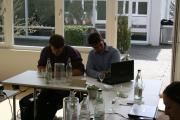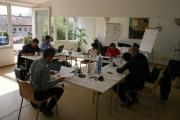"If you can’t measure it, you can’t manage it." This quote from a professor of the Harvard business school was the introduction into the controlling course. Besides theoretical input and practical exercises, numbers and calculations were the main topic of this 3-days-seminar, which took place in Esslingen, Germany. The lecturer of this course was Prof. Dr. André Coners, a very experienced top-management consultant who also lectures the ZEBS courses in process management and lean six sigma.
At the beginning, the working areas and the tasks of controlling were discussed. Controllers help during the management process of defining goals, planning and controlling and thus have a collective responsibility to reach objectives. They relieve managers, by overtaking some work and add their methodic competences to the decision making process. Finally, they restrict managers that they always work towards their goals.
The seminar focused on important controlling tools, which can be divided into operational and strategic controlling. Operational controlling focuses on quantified values for a short term horizon, such as costs, revenue and time, to ensure a fundamental analysis for the controlling process. On the contrary, strategic controlling considers the qualitative factors for a long term horizon. There is no clear separation between those two areas, since they depend on and influence each other.
The operational controlling includes cost and performance accounting, total cost of ownership and investments. The first two tools answer the question about where the costs have been generated. For the cost and performance accounting, those are the own and the common costs. The total cost of ownership uncovers the underestimated indirect costs, which are often much higher than the direct purchase costs. The investment tools, like internal rate of return, the net present value method and the complete financial planning method (Vollständige Finanzplanung, VOFI), calculate rate of return, which is used to compare different financial instruments.
Value-orientated controlling and the balanced scorecard are methods for strategic controlling. The value-orientated controlling tries to constantly increase the company’s value to maintain positive revenue. There are certain approaches to succeed. Growth through current and future business activities or changes in the asset structure by increasing foreign capital input are two examples. The balanced scorecard is a strategic tool, which generates key figures for the areas financial, customers, processes and potentials. It is used to set a clear strategy and to communicate the goals to the employees.
The course was a great experience. Prof. Coners combined interesting topics of controlling and focused on the practical elements, rather than on a lot of theoretical input. Thus, there was enough time to understand the difficulties when working on practical exercises, which were accompanied by each chapter. On the first day, the students were joined by some ZEBS alumni for a social event. The whole group was invited to a Greek restaurant to finish up the day and talk about the content of the seminar as well as the experience in the daily doing.
Simon, IMP-MBA student
